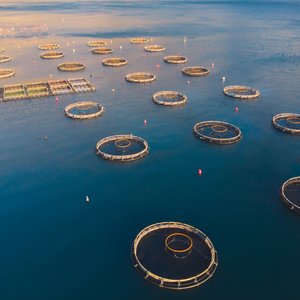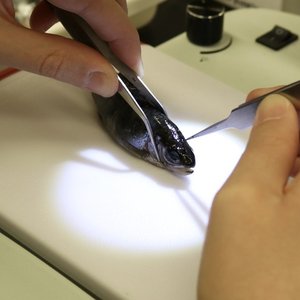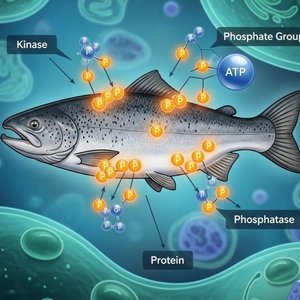EUMOFA’s EU Fish Market 2022 Edition reports that EU aquaculture production reached a total of 1.09 million tonnes, with a value of EUR 3.67 billion in 2020. This represented a 3% or 38,309-tonne decrease in volume, and a 1% or EUR 27 million decrease in value compared with 2019.
The decade perspective
Total EU aquaculture production increased by 58,595 tonnes or 6% from 2011 to 2020. Its value grew by 18% in real terms, which meant an increase of almost EUR 535 billion. This growth was connected to an increase in demand, but also to other factors such as a supply decrease in bivalves, and an increase in high-value species production, such as trout, salmon, seabass, and bluefin tuna, combined with the strong price increase of some major species, such as gilthead seabream, oyster and clam.
Key dynamics of major species
The report shows variations in volumes and values for EU aquaculture’s most important species from 2020 to 2019. Production decreased in this period, as they did between 2018 and 2019. Trout was the product that recorded the highest value while mussels showed the highest production in terms of volume.
Bivalves
Although, in the period 2016 to 2020, almost half of the EU aquaculture production volume consists of bivalves (48% of the total), mainly due to oysters and mussels produced in France and Spain, the report highlights a 9% decline in both volume and value from 2019 to 2020.
In 2020, oyster volume was 92,925 tonnes with a total value of EUR 405 million, while mussel production reached 406.910 tonnes valued EUR 392 million.
This trend could be explained by the occurrence of noroviruses in some areas of oyster production in France since December 2019, and a reduction in mussel production in Spain (the main producing country for this specie) which was probably due to a set of causes, such as diseases, lack of mussel seed (spat), and low profitability.
Regarding clam, in 2020, the production fell by 3% to 31,650 tonnes. Italy alone produces 77% of the EU’s farmed clams, reaching 24,452 tonnes for a total value of EUR 134 million.
Salmonids and other marine fish
In 2020, salmonids and other marine fish recorded slight increases in both volume and value. Salmonids include mainly trout with 184,840 tonnes valued at EUR 644 million and salmon with 17,152 tonnes (29% increase from 2019) valued at EUR 125 million. More than half of the EU trout volume was produced in France (20%), Italy (19%), and Denmark (16%), while 75% of salmon from aquaculture in the EU was produced in Ireland.
The category other marine fish includes mainly gilthead seabream with 93,205 tonnes valued EUR 454 million and European seabass with 80,786 tonnes valued EUR 470 million. For seabass and seabream, the largest producer is by far Greece, which alone was responsible for 66% of gilthead seabream and 50% of European seabass EU production.
Freshwater species
Relevant to EU aquaculture production, the freshwater sector largely comprises carp (7% of the total) which are produced mainly in Poland, Czechia, and Hungary recording a 1% increase in production volume and a 4% decrease in value. In 2020, 79,491 tonnes of carp were produced in the EU generating a value of EUR 169 million.
Eel production increased by 3% reaching 5,326 tonnes in 2020 and generated EUR 17 million in the Netherlands, EUR 15 million in Germany, and EUR 5 million in Denmark three major countries for this sector.
High-value sectors
Bluefin tuna’s share of the total more than tripled from 2011 to 2020 increasing from 0.5% to 3%. This increase in bluefin tuna production was due to an exceptional trend in Maltese production from 2011 to 2020, which soared by 387% in volume and 243% in value, an increase of more than 15,000 tonnes and EUR 138 million, even after adjusting for inflation. In 2020, Malta's bluefin tuna production reached 19,829 tonnes and EUR 215 million.
Furthermore, the total EU organic aquaculture production was estimated at 86,180 tonnes in 2020, accounting for 8% of the total EU aquaculture production. The production showed an increase of 27% or 18,460 tonnes from 2019, mainly due to a growth in organic production in France.
Import-export
Regarding fishery and aquaculture markets, the report provides detailed data and analyses of extra-EU imports, extra-EU exports, and intra-EU exchanges focusing on the major species traded and countries involved covering data up to 2021.
The value of the 2021 total trade flows was 33% higher than 10 years before in real terms, while they were 2% higher in volume and 9% higher in nominal value than one year before. Intra-EU exchanges covered 41% of the volume of all fishery and aquaculture products traded both within the EU and with third countries.
The extra-EU imports increased by 1% in volume and extra-EU exports decreased by 6% in volume from 2020, making intra-EU exports the transactions with the greatest growth, namely a 6% or 356,205-tonne increase from 2020.
The year 2021 saw overall growth in the total value of EU trade flows, and it also initiated a period of economic recovery from the COVID-19 pandemic crisis. Indeed, only a 1% compound annual growth rate had been recorded in terms of value from 2019 to 2021. For the first time in ten years, the nominal value of intra-EU exchanges was higher than that of extra-EU imports.
Download the report here.













